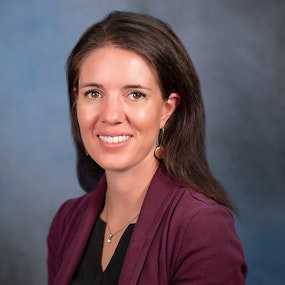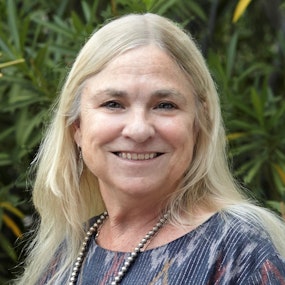ROBERT JOHNSON:
This is the award-winning Public Health Review Morning Edition for Wednesday, April 10, 2024. I'm Robert Johnson. Now, today's news from the Association of State and Territorial Health Officials.
SHARON STANCLIFF:
There has been some concern that because there's so much synthetic opioids out there, such as fentanyl, that the four milligram dose wasn't high enough to reverse an opioid overdose with fentanyl.
JOHNSON:
Dr. Sharon Stancliff at the New York State Department of Health, talking about four and eight milligram doses of naloxone now on the market, and a study the state performed with the help of state troopers to test the pros and cons of the two options.
STANCLIFF:
So we had three of the 11 state trooper units carrying the eight milligram that's all they carried. And the other aid continued to carry the four milligram so that we could see if there was any difference. So, when we got to about 100 administration's of the eight milligrams, we stopped and analyze the data, and we found the survival was the same in both groups.
JOHNSON:
But Stancliff says the higher dose turned out to be less desirable due to patient reaction.
STANCLIFF:
So, both groups gave slightly somewhere between one and two doses. But the people that received the eight milligram, they were more than twice as likely to have withdrawal symptoms, significant withdrawal symptoms. There was a lot of vomiting and vomiting when you're sedated can be medically dangerous.
JOHNSON:
Stancliff adds the study gave New York the data it needed to make an informed decision.
STANCLIFF:
To short up the choice that New York State made to provide the four milligram to law enforcement in the community and on the standing orders. Rather than go for the higher dose.
JOHNSON:
New York State collaborated with the CDC to produce a paper on the findings. You can read the document and listen to a podcast about the work by clicking the link in the show notes.
More money is coming to support behavioral health services in Maryland. Tonya Schwartz is with the State Health Department
SCHWARTZ:
So, the Maryland Department of Health just awarded 13 and a half million dollars in funding for 19 counties to expand and approve mobile crisis team services and for six counties to establish behavioral health crisis stabilization centers. And this funding is part of the Moore-Miller Administration's 107.5 million dollar investment into improving this system.
JOHNSON:
Once operational, the mobile crisis teams will be available 24 hours a day seven days a week in most areas of the state.
SCHWARTZ:
So, mobile crisis teams provide in person support to people when they experience a serious mental health or substance use challenge including a crisis as the person defines it. So these teams, which include a mental health clinician, go to wherever the individual is in the community.
JOHNSON:
The new behavioral health crisis stabilization centers are intended to be an alternative to an emergency room visit.
SCHWARTZ:
So, these centers will be open 24 hours a day, seven days a week, every day of the year and you won't need an appointment. And they'll provide up to 24 hours of services and supports to deescalate the situation stabilize the person assess the issue, provide treatment and medication if that's needed, and link them to ongoing care.
JOHNSON:
Also, today, many ASTHO members have teams assigned to address adverse childhood experiences in their communities. On Monday, April 22, staff can learn how to assess current work and use tools designed to enhance ACEs prevention capacity. The training session is online. It starts at 1pm Eastern time, you can sign up using the link in the show notes.
Finally, this morning policies and strategies focused on congenital syphilis are the topic of an ASTHO webinar happening later today. O'Keyla Cooper has more.
O'KEYLA COOPER:
Don't miss out on today's webinar with ASTHO and the Alaska Department of Health today at 3p.m. Eastern time for a discussion on reducing congenital syphilis through policy initiatives. Featuring ASTHO's immediate past president Dr. Anne Zink, and experts from Alaska's Department of Health and Social Services, learn about effective policy implementation and gain valuable insights. Register now using the link in the show notes.
JOHNSON:
Before we go, a reminder also to follow this newscast on your podcast player and connect with ASTHO on social media. We're on LinkedIn, Twitter, and Facebook. That'll do it for today.
We're back tomorrow morning with more ASTHO news and information. I'm Robert Johnson. You're listening to the award-winning Public Health Review Morning Edition. Have a great day.







